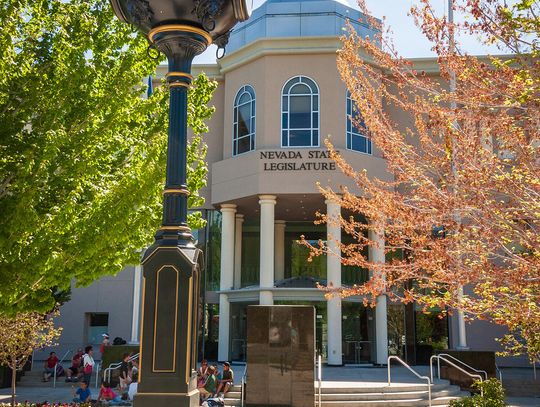If you are at all like me, you ended your year with a few moments of reflection, some tasty food, and a fair amount of champagne so it can be a bit challenging to get back into the swing of things after celebrating on New Year’s Eve. Whenever I find myself at an ending I tend to think back on the journey. Where have we been, who have we lost, who have we found, what brought us joy, how did we grow. These moments of yearly reflection are encapsulated for me in the words of Robert Burns's “Auld Lang Syne.” He asks us rhetorically, is it right that old times are simply forgotten? And we are inspired to answer that old friendships and experiences should be celebrated.
No sooner had I finished singing “Auld Lang Syne” on New Year’s Eve than I saw a post from the Fallon Rotary about their annual Burns Night Dinner. Robert Burns, affectionately remembered as Rabbie, is considered to be not just the national poet bard of Scotland, but in 2009 was voted the “Greatest Scot” of all time. His writings have influenced great artists through the ages including William Wordsworth, Robert Service, Bob Dylan, JD Salinger, and John Steinbeck.
Burns Night is a celebration of the life and legacy of Robert Burns, but the role of food should not be downplayed in the slightest. Burns Night takes place around a dinner table complete with toasts and tastes including Scotland's most (in)famous culinary tradition, the haggis. It is fair to say that there are few other dishes in Anglo-Culinary tradition that raise as many eyebrows as the haggis.
I like haggis. Haggis is similar to meatloaf. You should absolutely give it a try. Wikipedia says haggis is “a savoury pudding containing sheep's pluck (heart, liver, and lungs), minced with onion, oatmeal, suet, spices, and salt, mixed with stock, and cooked while traditionally encased in the animal's stomach.”
Our local Burns Night dinner always features a “ceremonial haggis” that is paraded around the room escorted by men in kilts with swords and accompanied by the fanfare of a bagpiper. Tasting is encouraged. The plated dinner features a more palatable choice between prime rib and salmon. I encourage you all to come enjoy the Burns Dinner celebration and experience Scottish culture Fallon-style and try a taste of Scotland’s most famous dish. For more information about our local Burns Night event, contact the Rotary Club of Fallon on Facebook.
Here are a couple of recipes for other traditional Scottish dishes so you can enjoy Burns Night any night.
Cullen Skink - a rich, creamy soup made with smoked fish, leeks, and heavy cream.
Interpreted from Serious Eats
INGREDIENTS:
4 cups whole Sand Hill Dairy milk
1 bay leaf
1 lb finnan haddie (Scottish smoked haddock), or substitute another kind of smoked fish
2 T unsalted butter
1 bunch of leeks, wash thoroughly, thin slice white parts
1 lb Yukon gold potatoes, peel on or off as desired, cut into 1/4-inch cubes
1/2 cup heavy cream
Kosher or sea salt and freshly ground black pepper
Pinch cayenne pepper (optional)
Finely minced chives, for garnish
DIRECTIONS:
-
In saucepan, heat milk with bay leaf over medium heat until nearly simmering. Add fish and cook until just starting to flake. Using a slotted spoon, remove fish to paper towels to drain; set aside. Discard bay leaf. Transfer milk to heatproof mixing bowl or other container; set aside.
-
Wash saucepan and return to medium heat. Add butter and cook until melted. Add leeks and cook, stirring frequently, until nicely softened but not browned, about 6 minutes.
-
Return milk to saucepan and add potatoes. Return milk to bare simmer. Cook until potatoes are tender, about 10 minutes; stir and scrape saucepan occasionally to prevent milk from scorching.
-
Using a potato masher or large wooden spoon, crush potatoes in pot until partially mashed. You want a good range of potato bits, some so small they thicken the broth but also larger chunks.
-
Remove and discard any skin or bones from fish; then flake into the soup. Add cream. Season with salt and pepper, and, if desired, stir in pinch of cayenne. Serve, sprinkling chives on top of each bowl.
Cranachan - the classic Scottish dessert of Scotch-spiked whipped cream layered with raspberries and toasted oats and sweetened with honey.
Recipe from Serious Eats
INGREDIENTS:
2 cups heavy cream
1/4 cup rolled oats
12 oz fresh raspberries, divided
1 t fresh lemon juice
1 T unsalted butter, melted
Kosher salt
2 T mascarpone cheese
3 T Scotch whisky - this is a good place to use a lighter blended scotch like Dewar’s
2 T honey, plus more for drizzling
DIRECTIONS:
-
Preheat oven to 400°F (205°C). In a medium bowl, combine cream with oats, soak 20 minutes.
-
Meanwhile, in a medium bowl, crush 8 ounces of the raspberries with a spoon to make a pulpy puree. Stir in lemon juice. Set remaining 4 ounces whole raspberries aside.
-
Using a fine-mesh strainer, strain oats, collecting the cream in a bowl; use a spoon or rubber spatula to press out as much cream as possible. Set cream aside.
-
In a small oven-safe skillet or on an aluminum baking sheet, stir soaked oats with melted butter and toast in oven, tossing and stirring frequently, until deeply browned, about 20 minutes (you want the oats to darken nearly to the point of being burnt, but don't actually burn them). Strain oats on paper towels, and sprinkle with a generous pinch of salt.
-
In a food processor, combine reserved cream with mascarpone, Scotch, honey, and a pinch of salt. Process until a dense whipped cream forms.
-
To Assemble: In individual serving glasses, spread an even layer of whipped cream. Top with a layer of the raspberry purée. Sprinkle some toasted oats on top, then add one more layer of the whipped cream to fill (or nearly fill) the glasses. Garnish each with the reserved whole raspberries, sprinkle additional toasted oats on top, and drizzle with honey. Serve.








































Comment
Comments